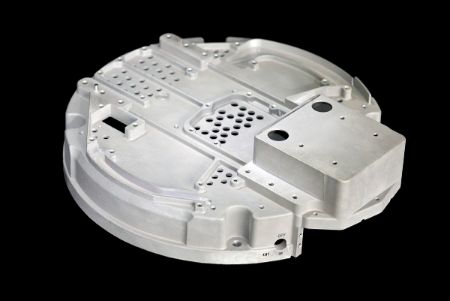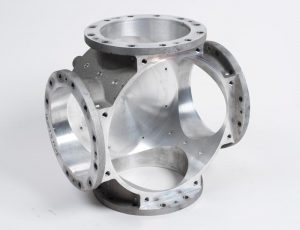Aluminum Casting Explained: Key Truths and Insights for Sector Professionals
Aluminum casting acts as a crucial process in modern-day manufacturing, forming components across different sectors. Its diverse approaches, such as sand and die casting, accommodate various production demands. The distinct buildings of aluminum alloys improve their applicability, yet tests remain in maintaining top quality and effectiveness. Comprehending these elements is important for market specialists. What are the most recent advancements and finest techniques that can additionally enhance this process?
Review of Aluminum Casting Processes

Crucial element of aluminum casting processes include the preparation of molds, which may be made from sand, steel, or ceramic products, depending on the meant usage. Furthermore, temperature level control is critical to ensure appropriate melting and solidification of aluminum.
The casting process enables elaborate layouts and can accomplish high levels of dimensional accuracy. As soon as cooled down, the spreadings might go through completing operations such as machining or surface area treatment to satisfy details efficiency requirements. Overall, aluminum casting acts as a versatile production method, successfully satisfying the varied demands of numerous sectors.
Types of Aluminum Casting Techniques
In the domain name of aluminum casting, different approaches are used to accomplish different outcomes. Sand casting strategies offer flexibility and cost-effectiveness for complicated forms, while die casting procedures offer high precision and performance for automation. Understanding these approaches is crucial for selecting the proper approach based on task demands.
Sand Casting Methods
Sand casting strategies stand for an essential method in aluminum casting, where sand is used as a mold and mildew product to shape liquified metal. This procedure involves producing a pattern from the wanted part, which is then positioned in a sand blend to form a mold. The sand is compacted around the pattern, and after elimination, it develops a tooth cavity in the form of the component. Molten aluminum is poured right into this tooth cavity, allowing it to cool down and strengthen. One considerable benefit of sand casting is its versatility; it can fit intricate shapes and large elements. Additionally, the products used are fairly affordable, making it an obtainable alternative for various production applications in the aluminum industry.
Die Casting Processes
Die casting procedures are a prominent method for forming aluminum parts, making use of high-pressure strategies to compel liquified steel right into specifically crafted molds. This process is particularly favored for its ability to create intricate forms with tight resistances and a smooth surface. There are two main sorts of die casting: warm chamber and cool chamber. Warm chamber die casting appropriates for steels with reduced melting factors, permitting for faster production rates. Alternatively, chilly chamber die casting is perfect for higher melting factor steels, needing a different melting heating system. Both approaches enhance efficiency and lower material waste, making them important in vehicle, aerospace, and consumer goods industries. Comprehending these procedures helps professionals choose one of the most suitable method for their particular applications.
Material Residence of Aluminum Alloys

Strength and Sturdiness
Toughness and durability are important attributes of aluminum alloys that make them suitable for different casting applications. These products show a beneficial strength-to-weight proportion, permitting the production of lightweight yet robust components. With respect to tensile toughness, details aluminum alloys can be engineered to withstand significant tons without warping. This residential or commercial property is particularly crucial in markets such as aerospace and auto, where efficiency and safety and security are extremely important. In addition, aluminum alloys typically preserve their mechanical buildings under varied temperature conditions, guaranteeing consistent performance. The innate ductility of these alloys additionally allows for reliable shaping throughout the casting procedure, making it simpler to produce intricate geometries. Generally, the stamina and longevity of aluminum alloys contribute significantly to their prevalent usage in innovative applications.
Corrosion Resistance Characteristics
While aluminum alloys are treasured for their strength and lightweight residential properties, their rust resistance is one more vital feature that boosts their suitability for various applications. Aluminum normally develops a protective oxide layer when revealed to wetness, which aids to avoid additional oxidation. This fundamental residential property makes aluminum alloys especially important in environments vulnerable to corrosion, such as commercial and marine settings. Additionally, various alloy make-ups can affect resistance levels, with particular alloys especially engineered to boost this characteristic. Therapies like plating can further boost corrosion resistance by enlarging the oxide layer. Comprehending the corrosion resistance of aluminum alloys is crucial for industry experts when selecting materials for jobs calling for sturdiness and long life in challenging settings.
Advantages of Aluminum Casting in Production
Aluminum casting deals numerous advantages in production, making it a recommended choice for various markets. One substantial benefit is its lightweight nature, which contributes to lowered transport costs and improved energy effectiveness in end items. Aluminum's exceptional thermal and electrical conductivity enhances capability in applications requiring heat dissipation or electrical transmission.
The material's capacity to be cast into elaborate forms permits layout flexibility, reducing the demand for extra machining processes. On top of that, aluminum casting exhibits remarkable deterioration resistance, causing longer product life expectancies and reduced upkeep expenses.

Usual Applications of Aluminum Castings
The adaptability of aluminum casting allows useful reference its extensive usage across various markets. Usual applications include automobile components, where light-weight and corrosion-resistant components, such as engine blocks and transmission housings, boost automobile performance. In the aerospace industry, aluminum spreadings are made use of see for structural components, using toughness without adding substantial weight.
Additionally, the electrical sector gain from aluminum spreadings in manufacturing rooms and warmth sinks, where thermal conductivity is essential. The durable goods market additionally incorporates aluminum castings in products like pots and pans, furnishings, and attractive things, integrating aesthetic appeals with capability.
The construction sector uses aluminum spreadings for building components, window structures, and components, which provide sturdiness and style adaptability. Generally, the varied applications of aluminum castings underscore their significance in modern manufacturing, adding to improvements in performance and product style throughout several fields.
Advancements and Technological Innovations
As markets remain to develop, advancements in aluminum casting technology are transforming manufacturing processes and product capabilities. Innovations in 3D printing and additive manufacturing have actually enabled the creation of complex geometries that were previously difficult to attain with conventional methods. These technologies enable fast prototyping, decreasing preparations more information and expenses.
Additionally, renovations in mold layout and materials have boosted the casting procedure by enhancing performance and minimizing waste. The integration of clever manufacturing strategies, such as IoT gadgets and real-time information analytics, permits better monitoring and optimization of manufacturing parameters, leading to greater high quality results.
Growths in aluminum alloys give improved strength, rust resistance, and light-weight homes, providing to the expanding demands in vehicle and aerospace sectors. Collectively, these technologies are not only improving efficiency yet also meeting the extensive criteria of modern-day design applications.
Ideal Practices for Quality Assurance in Aluminum Casting
Making sure high-quality outputs in aluminum casting needs adherence to finest methods that incorporate various stages of the production process. Comprehensive material evaluation is vital to confirm the high quality of aluminum alloys used, as impurities can greatly impact the final item. Implementing precise melting and putting methods decreases problems; maintaining ideal temperatures avoids oxidation and promotes uniformity.
Mold and mildew layout plays an important duty; using computer-aided design (CAD) can improve accuracy and decrease human mistake. Routine surveillance of the cooling procedure is critical to stay clear of warping and shrinkage. In addition, making use of non-destructive screening methods, such as ultrasonic or X-ray inspections, aids identify inner problems without damaging the parts.
Establishing a responses loop with engineers and drivers fosters constant enhancement, guaranteeing that top quality control steps advance alongside technical innovations. By following these best methods, makers can boost the integrity and performance of aluminum castings.
Often Asked Concerns
What Are the Ecological Influences of Aluminum Casting?
The ecological influences of aluminum casting consist of significant energy usage, greenhouse gas exhausts, and potential water air pollution from shop operations. Furthermore, bauxite mining for aluminum ore can cause environment devastation and soil degradation.
Exactly How Does Aluminum Casting Contrast to Other Metal Casting Processes?
Aluminum casting commonly offers advantages in lightweight parts and corrosion resistance compared to other processes, such as iron or steel casting, which may supply better toughness yet cause larger and much less corrosion-resistant products. - Aluminum Casting Company
What Are Usual Issues in Aluminum Castings and Their Reasons?
Common defects in aluminum spreadings include porosity, contraction, and incorporations. Reasons usually originate from inappropriate putting strategies, insufficient mold design, or contamination of the molten metal, influencing the last item's stability and performance.
What Security Precautions Should Be Taken Throughout Aluminum Casting?
During aluminum casting, essential security precautions include wearing protective equipment, making certain proper air flow, maintaining a clean work area, dealing with liquified steel with treatment, and complying with established methods to decrease dangers of burns, inhalation dangers, and accidents.
How Can I Boost the Effectiveness of My Aluminum Casting Workflow?
To boost efficiency in aluminum casting procedures, one ought to maximize mold layout, simplify product handling, utilize automated processes, carry out regular maintenance on devices, and buy employee training to enhance skills and performance.
Numerous techniques exist, aluminum casting encompasses several key processes that cater to various applications and needs. Key components of aluminum casting processes consist of the preparation of mold and mildews, which might be made from sand, steel, or ceramic materials, depending on the intended use. Sand casting techniques stand for an essential technique in aluminum casting, where sand is made use of as a mold material to shape liquified steel. As sectors continue to evolve, technologies in aluminum casting innovation are transforming manufacturing procedures and product capacities. Guaranteeing high-grade outcomes in aluminum casting calls for adherence to finest practices that encompass numerous stages of the production procedure.